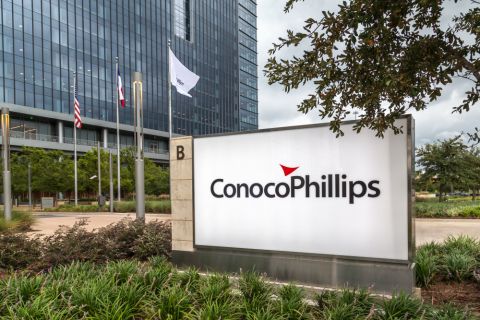
When the team is ready to move forward, all speculation about the possibilities must be replaced with a definitive decision timeline. (Source: SSOE/Getty Images)
Change is inevitable.
Manufacturing leaders need to center their planning, assessment and decision making around the ever-changing needs of the marketplace. Some projects are driven by time-to-market schedules and when not executed prior to the competition, value falls short. Other projects are driven by the need to lock in a position by seizing market share quickly because being third to the table means a company spends the same amount of money but gains substantially less value.
Speed of execution is crucial to value, but the degree of certainty in an outcome is also critical.
Here are insights.
Working Toward a Better Scope with Certainty. In planning, better defined costs are achieved with a better scope which includes details, estimates, quotes, supplier commitments and historical data from similar projects.
Accomplishing this means:
- Developing details. This includes defining specific equipment, raw materials and unique specifications which need to be delivered to complete the project as well as getting to know vendors and suppliers.
- Prioritizing. There are a number of ways to envision opportunities, but priorities strip away a multitude of options to clearly define the goals most important to the business so the project can move forward. When difficulties arise in prioritization, businesses can narrow the options by determining their area of expertise—customization, flexibility, time to market—getting back to basic principles, core competencies and company culture.
- Preparing to move forward. When the team is ready to move forward, all speculation about the possibilities must be replaced with a definitive decision timeline, as timelines drive projects.
When the timeline enters, the capital spending plan comes into focus. Project leaders and teams need to understand if they aren’t ready to move forward, another project might be. If the team is having difficulty moving past the gray areas, taking a view from a broader perspective is advisable to explore alternatives, developmental resources and data to make an informed, high-degree-of-certainty decision.
Getting Past the Gray Areas of Decision Making. For project leaders, decision making often becomes a gray area, particularly in selecting the project which will optimize value for the company. When this becomes the case, stakeholders seek to spend more time defining projects and determining the key differentiators among those options.
Differentiators come in many varieties—such as financial or technical—and business leaders consider their company culture and priorities to decide.
Sound market-based information can help guide decisions by uncovering weak spots or reinforcing strong points to find the outstanding opportunity for the company. Market trends are significant indicators to consider when decision making is arduous.
For example, a significant market trend important to many businesses is the changing energy and resource mix. The growth of natural gas is changing cost structures and allowing business to consider projects they would have never considered 20 years ago.
The competitive marketplace changes that because energy effects every business in significant ways. Scenarios can demonstrate energy’s impact based on current numbers and trends and predict outcomes for the next 10, 20 or 30 years.
Let’s consider an example. Many stakeholders are dealing with facilities that have significant steam usage. Evaluating the way they have made and used steam in the past (boilers) can help them understand the best way to expand for the future.
Some leaders are better served working with local utilities and vendors to cogenerate steam and electricity from natural gas rather than utilizing electricity from the grid at a coal-fired plant or upgrading existing steam boilers.
This is particularly true for larger facilities that will gain substantial improvement in costs and efficiency. For smaller facilities, the better option may be to expand or replace natural gas boilers, which can also help with emissions. Other facilities, which use fuel oils for heating, are finding they can capture lower energy costs by replacing older fire heaters or steam boilers with dual-fuel burner or natural gas options.
But solutions aren’t always black or white. When making decisions, the goal is always to find a definitive answer, but there are times when solutions aren’t black or white. Decision making isn’t always accomplished by the numbers but rather comes down to assumptions and the risk/uncertainty envelope.
This risk/uncertainty envelope includes your “known knowns” things known with some certainty, “known unknowns”—information that is missing or uncertain, and “unknown unknowns”—the missing information and uncertainty in blind spots that isn’t even on radars. The first two form the basis of our everyday analysis—resolving and minimizing the gaps to increase certainty and reduce risk. The last can only be addressed by relentlessly learning, questioning, challenging and preparing with contingency plans and recovery strategies. Two seemingly similar opportunities with substantially different risk/uncertainty envelopes are not the same and should be treated as such.
Often a new set of assumptions on the front-end will change the outcome. Decision makers want to be clear regarding the new assumptions whether they are related to technology or market trends. The reality is risk tolerance or confidence in past successes can guide decision making when no potential payoff can be identified but sensitivity to assumed input values should also be considered. Generally, decisions regarding changes or new methods are driven by the promise of substantial benefits.
For example, a new technology may promise the company up to 10% improved efficiency. The challenge is to achieve the goal. If the most optimistic estimate must be achieved to realize the benefit—in this case 10% improved efficiency—every variable must be controlled and in perfect alignment to achieve payback.
Uncovering discoveries in the gray area. In the gray area of decision making, the ultimate question is, “How much risk is the company willing to take?” To determine that risk, companies return to the risk envelope to create a bullet point list of concerns. These concerns or risks must be reasonable and recognizable, credible and important, which generally means a list of no more than 10 areas of concern.
Once defined, leaders can determine what value will make the project worthwhile. If the value barrier is very high, the technology may not be available to accomplish the desired goals. At this point, the company may not want to make the change being considered.
Make the right decisions to stay competitive. The ultimate goal is keeping the business competitive in a continually changing marketplace. When the value is not significant, projects stall. Every business leader looks for what’s missing, what they haven’t seen before, to determine potential disruptive forces and remain relevant in the marketplace. This ultimately requires three essentials for positive outcomes when gray and grueling:
- Understanding the company’s priorities;
- Recognizing the company’s culture, specifically how decisions are made and
- Acknowledging a timeline for data gathering and discovery.
Change is inevitable and understanding planning, assessment and decision making, even in the gray areas, are crucial to success. Maintain a disciplined approach to increase certainty and reduce risk.
Eric Hopkins is a senior chemical process engineer and senior associate at SSOE Group, a global project delivery firm for architecture, engineering and construction management.
Recommended Reading
Sempra Targets Summer 2025 for Commercial Start of ECA LNG Phase 1
2024-03-06 - Sempra is targeting the summer of 2025 as the commercial operations date for its 3.25 mtpa (0.43 Bcf/d) nameplate capacity Energía Costa Azul LNG Phase 1 project, located in Ensenada in Baja California, Mexico.
Heard from the Field: US Needs More Gas Storage
2024-03-21 - The current gas working capacity fits a 60 Bcf/d market — but today, the market exceeds 100 Bcf/d, gas executives said at CERAWeek by S&P Global.
FERC Approves Extension of Tellurian LNG Project
2024-02-19 - Completion deadline of Tellurian’s Driftwood project was moved to 2029 and phase 1 could come online in 2027.
ConocoPhillips CEO Ryan Lance Calls LNG Pause ‘Shortsighted’
2024-02-14 - ConocoPhillips chairman and CEO Ryan Lance called U.S. President Joe Biden’s recent decision to pause new applications for the export of American LNG “shortsighted in the short-term.”
Midstream Builds in a Bearish Market
2024-03-11 - Midstream companies are sticking to long term plans for an expanded customer base, despite low gas prices, high storage levels and an uncertain political LNG future.





